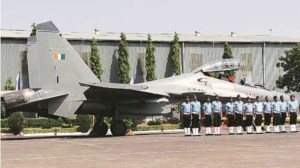Tibet Rail: Dalai Lama’s open mind
While supporters of the Tibetan cause protested against the inauguration of the spectacular rail line from Gormo to Lhasa on Saturday...

While supporters of the Tibetan cause protested against the inauguration of the spectacular rail line from Gormo to Lhasa on Saturday, the Dalai Lama has left himself some political room.
Thubten Samphel, the spokesman for the Tibetan government in exile in Dharmashala, has been quoted by Western news agencies as saying the Dalai Lama has offered a “conditional welcome” to the rail line. Samphel said: “The railway line itself is not a cause of concern for the Tibetan people.” How it will be used is the real problem. There might be a number of reasons for the Dalai Lama’s “wait and watch” attitude.
For one, the Dalai Lama is involved in sensitive “talks about talks” with the Chinese government and might not want the rail line to mar the prospects for the long-awaited dialogue, despite his concern for the environmental and demographic consequences. Sensibly, he does not want to be seen as reinforcing the Chinese claim that he represents the old feudal theocracy in Tibet and is opposed to the modernisation of his home-land.
More than anyone else, the Dalai Lama is acutely aware that his predecessors’ fierce resistance to opening up Tibet was the root cause of its loss of independence in mid-20th Century. The Dalai Lama’s challenge today is to help his people take full advantage of the Chinese attempts at Tibet’s development and globalisation while preserving their cultural and political autonomy.
The Lhasa Station
Like all state builders in history, Chinese Communist Party is acutely aware of the political symbolism of architecture. The Lhasa station, about 20 km from the heart of the city, has a large red structure flanked by two smaller white buildings, much like the Potala Palace, the centuries-old abode of the Dalai Lama.
The CCP’s decision to copy the breathtaking architecture of the Potala Palace, originally built in the 7th Century and expanded in the 17th Century, is in itself a big political message. The CCP is putting out a signal that it is in the business of promoting Tibetan culture, not destroying it.
During China’s Cultural Revolution, the Red Guards led the extensive vandalisation of Tibetan heritage. Once Deng Xiaoping reversed this policy, Beijing figured out it is better politics and more fun making money on Tibet’s inheritance. Deng’s successors have poured money into renovating and refurbishing many of the old marvels of Tibet, including the Potala Palace. The rail line, China hopes, will raise annual tourist flows into Tibet to 2.5 million by 2010 and 6 million by 2020.
CCP’s birthday
Besides architecture, the decision to launch the train service to Lhasa on July 1— the anniversary of the founding of CCP, is equally important.
The CCP General Secretary and Chinese President Hu Jintao was at hand in Gormo to flag off the first train. The rail line is of special personal satisfaction to Hu, who had served as the top gun of the CCP in Lhasa as he climbed up the party’s greasy pole. Communist propagandists rarely resist the temptation for overkill. The glorification of Hu’s teachings, now at the top of CCP’s political agenda, has inevitably got mixed up with the Tibet rail. In every compartment of the Tibet train, the Chinese news agency Xinhua tells us, inscriptions bearing the “eight virtues and eight vices” recently decreed by Hu have been displayed.
Hu’s Theory
Last Saturday, Hu Jintao gave the customary speech on the 85th anniversary of the party. The speech reflected the new concerns of Hu as well as all the new ideas he has promoted in the last few years.
These include the “building of a harmonious society” amid growing social tensions, “fostering socialist ethics” to address the mounting challenge of corruption, “promoting scientific development” to move China from a labour-intensive to a technology oriented economy, “constructing a socialist country side” to cope with deepening rural unrest, and “advancing peaceful development” to counter the Asian apprehensions of a China threat. All these concepts are adding up to Hu Jintao’s own socialist theory that is likely to be unveiled at the five yearly party congress in 2007. That in turn would establish the place of Hu in the CCP pantheon, along with Marx, Lenin, Mao, and Deng.
Meanwhile, with the growing public outrage against official corruption in China, the CCP wants to be seen as acting against immorality in high places. Last Thursday, a former deputy commander of the Chinese Navy was expelled from the National People’s Congress on charges of economic crimes after his mistress turned him in, the People’s Daily reported. The history of communist parties, however, tells us that cleansing campaigns of the kind that has now been launched in China could very easily turn into a witch-hunt and target political opponents.





- 01
- 02
- 03
- 04
- 05

























